
Samhain, pronounced sow-in, sow-een, or saw-in, is one of the four Greater Sabbats. It is observed annually on October 31st which is approximately halfway between the autumn equinox (Mabon) and the winter solstice (Yule). In some Wiccan traditions, Samhaim is the most important sabbat and is often considered as the Pagan New Year.
As the third and last harvest festival of the year, this sabbat represents the end of the harvest season. It’s a time when the last of the year’s produce has been completely harvested and the Earth is now preparing to go dormant for the “dark half” of the year. During Samhain, contemporary Pagans take the opportunity to give Earth a final thank you for her generous gifts. It is also a time for introspection, divination, and celebration as well as to honor family, friends, and ancestors who have passed away.
HISTORICAL SAMHAIN
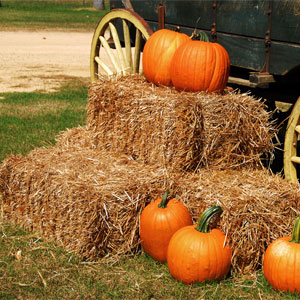 As with the other Greater Sabbats, contemporary Samhain has its roots in ancient Celtic customs. Archeological artifacts show that it was held as a final harvest festival, in some way, dating as far back as several thousand years ago. However, the earliest historical record of it being held on October 31st only dates back to the early medieval era, though why this particular date was chosen is unknown.
As with the other Greater Sabbats, contemporary Samhain has its roots in ancient Celtic customs. Archeological artifacts show that it was held as a final harvest festival, in some way, dating as far back as several thousand years ago. However, the earliest historical record of it being held on October 31st only dates back to the early medieval era, though why this particular date was chosen is unknown.
The name “Samhain” originates from the old Irish word samain which translates to “summer’s” (sam) and “end” (fuin). For Celts, ancient tribes of central Europe, this was perhaps the most important time of year and it was celebrated accordingly. It was a time to finish preparing for the often harsh winter ahead.
At this point, annual crops had been completely harvested and cattle had been brought in from the fields. Food crops that would “keep” such as grains and root vegetables had been stored for the winter and more perishable foods were preserved. The success of the harvest and food preservation greatly affected a family’s or a community’s ability to survive the winter months.
Once the preparations for winter were over, people gathered to celebrate. They lit great bonfires and feasted, giving thanks for everything they’d received during the previous year and also mourning that which they’d lost. They danced and played games, such as bobbing for apples. Divination for the upcoming year also sometimes took place. At the end of their festivities, the people would light a branch or torch from the Samhain bonfire to light their home hearths with, as this was considered sacred.
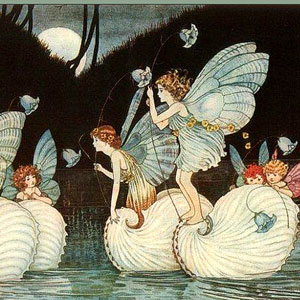 Death wasn’t so much feared by Celts but rather accepted as a part of the circle of life. They would encourage visits from departed spirits, even setting table places for them to feel welcomed. The same cannot be said of faeries, however. The Celts believed that the barrier or membrane between Earth and the faerie realm was thinnest during this time of year. This allowed the fae to easily cross over.
Death wasn’t so much feared by Celts but rather accepted as a part of the circle of life. They would encourage visits from departed spirits, even setting table places for them to feel welcomed. The same cannot be said of faeries, however. The Celts believed that the barrier or membrane between Earth and the faerie realm was thinnest during this time of year. This allowed the fae to easily cross over.
The people especially feared malevolent faeries who were believed to spoil stored foods, kill livestock, and steal children. As such, communities left lighted torches, gifts of food, and even animal sacrifices at the edges of the forests and fields to appease the evil faeries. The people would also wear animal masks and costumes to scare the fae away from their homes and farms. Some carved scary faces into trees and vegetables to further ward off wicked faeries.
While modern-day Samhain and Halloween (also spelled Hallowe’en) share the same calendar date and even some customs, they are not the same celebration. Most ancient European cultures honoured their dead usually in late spring. The early Church adopted the custom to encourage pagans to convert to Christianity. As such, it became All Saints’ Day and is still a Christian holiday today during which departed loved ones are honoured. All Hallows’ Eve took place the night before All Saints’ Day and was originally a night of vigil and preparation for All Saints’ Day.
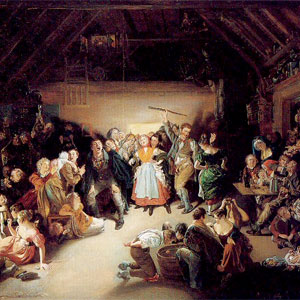 Although Christianity reached Europe by the early Middle Ages, pagan cultures including the Celts continued to flourish. These peoples, however, celebrated their dead in the fall. Consequently, the Church began celebrating All Saints’ Day in autumn as well, instead of during spring, in an effort to further encourage pagan conversion to Christianity. Pope Gregory IV officially made the date of All Saints’ Day November 1st during the 9th century.
Although Christianity reached Europe by the early Middle Ages, pagan cultures including the Celts continued to flourish. These peoples, however, celebrated their dead in the fall. Consequently, the Church began celebrating All Saints’ Day in autumn as well, instead of during spring, in an effort to further encourage pagan conversion to Christianity. Pope Gregory IV officially made the date of All Saints’ Day November 1st during the 9th century.
As such, by default, All Hallows’ Eve fell on October 31st which, by this time, was also the date Samhain fell on. Several pagan Samhain symbols and activities were historically integrated into the Christian All Hallows’ Eve celebrations over time, hence the confusion that the two are the same celebration when they are not.
CONTEMPORARY SAMHAIN
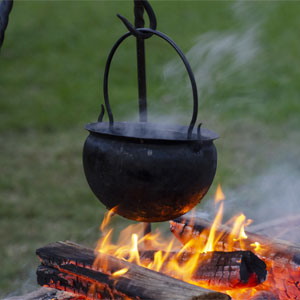 Modern Samhain bears little resemblance to that of our spiritual ancestors. Most modern Pagans haven’t recently finished harvesting crops or tending cattle. We aren’t afraid of faeries nor are we trying to keep them at bay. Regardless, Samhain is an opportune time to show gratitude for that which Earth has generously provided us with, from crops and animals for food, to materials for clothes and shelter.
Modern Samhain bears little resemblance to that of our spiritual ancestors. Most modern Pagans haven’t recently finished harvesting crops or tending cattle. We aren’t afraid of faeries nor are we trying to keep them at bay. Regardless, Samhain is an opportune time to show gratitude for that which Earth has generously provided us with, from crops and animals for food, to materials for clothes and shelter.
As we still recognize that the veil between humans and the supernatural realm is thin during this time of year, it’s also an auspicious time to reach out to our departed loved ones, communicating with them and also honouring them.
It is a time for introspection, to reflect on the previous year, to work on divination to plan for the upcoming year and past-life recollection to learn from previous mistakes. Faerie magick is especially powerful during Samhain as are spells to help with the breaking of old habits and the forming of new ones.
SAMHAIN AS A MAJOR SABBAT
: Much less commonly, there are some Pagans who view Samhain as one of only two Major Sabbats; the other being Beltane. Samhain is directly opposite Beltane, both on the Wheel of the Year and in its observances. Beltane celebrates the light half of the year and the fertility and new life associated with it, while Samhain celebrates the dark half of the year including the final harvest associated with it.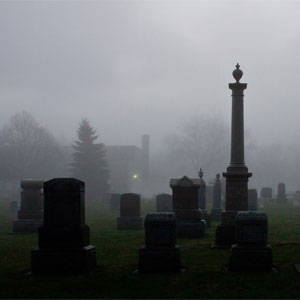
SAMHAIN & THE THINNING OF THE VEIL
: Both Beltane and Samhain take place during the two times of year when the veil between the Earthly corporeal dimension and the spirit dimension is the thinnest. This is due to the astronomical positions of Earth, the moon, and the sun; not because of an arbitrary date on the calendar.As such, communications between the two dimensions are more likely to be successful and comprehensible for approximately a week before and a week after each of these two sabbats.
The time during which Samhain falls is an auspicious time of year to communicate with the departed spirits, especially loved ones and ancestors, as well as to work past-life recollection and reincarnation magick.

SAMHAIN MAGICKAL CORRESPONDENCES
MAGICKAL & SPIRITUAL INTENTIONS: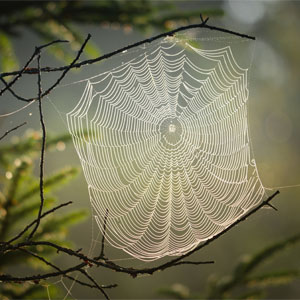 Ancestors; beginnings; bereavement; bad habit breaking; change; clarity; courage; death; divination; endings; faerie magick; good habit beginning; grief; grounding; honour; introspection; mourning; new beginnings; past-life recollection; protection: rebirth; reincarnation; releasing; renewal; sorrow; spirit communications; success; wisdom.
Ancestors; beginnings; bereavement; bad habit breaking; change; clarity; courage; death; divination; endings; faerie magick; good habit beginning; grief; grounding; honour; introspection; mourning; new beginnings; past-life recollection; protection: rebirth; reincarnation; releasing; renewal; sorrow; spirit communications; success; wisdom.
ANIMALS: Bat; cat, especially black; crow; owl; raven; spider, including web; wolf.
COLOURS: Black; brown; grey; orange; purple (dark); silver; yellow.
CRYSTALS & STONES: Carnelian; jet; moonstone (grey); obsidian; onyx; smoky quartz; tourmaline (black).
DECORATIONS & SYMBOLS: Acorns; black, orange, & purple candles; cauldron; crystal ball; fallen leaves, especially oak; full moon; Jack O’Lanterns; mask; photos of family and friends who have passed away; pomegranate; pumpkins, squash & gourds; Samhain animal statues & imagery.
ELEMENT: Fire.
ESSENTIAL OILS: Allspice; cinnamon; cloves; frankincense; myrrh; patchouli; rosemary.
FLOWERS: Calendula; chrysanthemum; heather; marigold; rose.
FOOD & DRINK: Apple cider; grains; meats; stew with root vegetables;
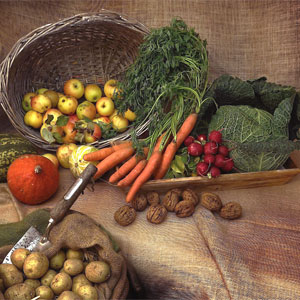 FRUIT & VEGETABLES: Apples; gourds; pumpkins; nuts, especially acorns; pears; pomegranates; root vegetables, including carrots, potatoes & turnips; seeds; squash.
FRUIT & VEGETABLES: Apples; gourds; pumpkins; nuts, especially acorns; pears; pomegranates; root vegetables, including carrots, potatoes & turnips; seeds; squash.
HERBS & SPICES: Allspice; catnip; garlic; mugwort; rosemary; sage (common/garden).
INCENSE: Allspice; cinnamon; frankincense; myrrh; patchouli; rosemary.
METALS: Brass; copper; iron; silver.
SMUDGES: Copal; dragon’s blood; frankincense; myrrh; rosemary; sweetgrass.
TOOLS: Besom; cauldron or other eco-friendly fire-safe vessel for smudging; crystal ball.
TREES & SHRUBS: Apple; beech; blackthorn; cedar; hazel; willow; witch hazel; yew.
SAMHAIN CELEBRATIONS
Samhain is the most important of the sabbats and there are many ways to incorporate it into your life. However, you can make your observances as quiet and informal or as festive as pleases you. You can celebrate with family and friends or you may feel more introspective, choosing to observe it on your own. There’s no one right way to commemorate any sabbat so it’s best to embrace traditions that you’ll enjoy repeating year after year.
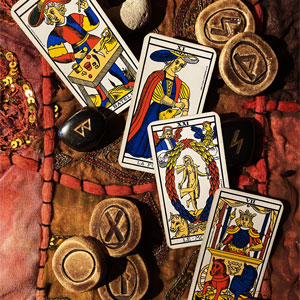 Decorate your altar or other sacred space as well as your home for Samhain with items such as: bat, black cat, crow; owl; raven; spider & web; wolf statues & imagery; a cauldron; a crystal ball; acorns, pomegranate, pumpkins, gourds & squash; Jack-O’-Lanterns; fallen leaves, especially oak; photos of deceased family, friends, and ancestors – all of which symbolize this sabbat.
Decorate your altar or other sacred space as well as your home for Samhain with items such as: bat, black cat, crow; owl; raven; spider & web; wolf statues & imagery; a cauldron; a crystal ball; acorns, pomegranate, pumpkins, gourds & squash; Jack-O’-Lanterns; fallen leaves, especially oak; photos of deceased family, friends, and ancestors – all of which symbolize this sabbat.
This is an auspicious time for all methods of divination, including: candle or fire scrying; crystal ball scrying; geomancy; mirror scrying; pendulum dowsing; playing card reading; runes; tarot reading; tea leaf reading; water scrying. So, work with your divination tools to plan your upcoming year. You could even craft a magick Witch Mirror to scry into.
This is also a good time break a bad habit or begin a new good habit. Use a daily or weekly journal to help you on this journey.
Host a Dumb Supper. This is a meal that includes place settings for loved ones who have passed away in the previous year, including pets. You could prepare family recipes that have been passed down and were enjoyed by your deceased loved ones. During this supper, you would speak to the departed, taking the opportunity to tell them things you didn’t have the opportunity to say before. Please note that dumb refers to the muteness and silence of your guests, not today’s derogatory meaning of the word.
Write letters to your deceased family members and friends, sharing your feelings about them, with them.
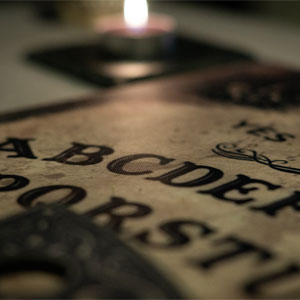 Hold a séance to contact the spirits of your deceased loved ones. You could also use a Ouija board with a planchette or a pendulum with a spirit board to do so.
Hold a séance to contact the spirits of your deceased loved ones. You could also use a Ouija board with a planchette or a pendulum with a spirit board to do so.
Honour family members, friends, and ancestors who have passed away by sharing stories about them with others; tidying up their tombstones and the cemetery where they’ve been laid to rest.
Take a nature walk and collect items that the Earth has provided you for your altar, such as acorns, pinecones, seeds, stones, or even a small fossil rock. You might also find a fallen branch or twig that would make an awesome general-purpose wand.
Provided it is safe and legal to do so, light a bonfire to meditate by and feel the spiritual cleansing. It doesn’t have to be a big fire – just a few logs. Keep your garden hose at hand, just in case. Focus on the fire and reflect on the previous year. Charge your altar tools by the fire as it’s a favourable time to do so. Save the ashes to craft Witch’s Black Salt.
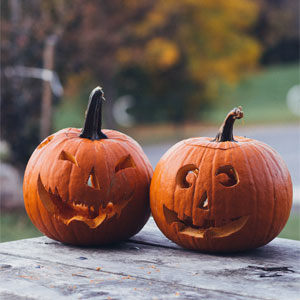 Get into the seasonal spirit by enjoying activities such as bobbing for apples, wearing costumes to “ward off evil spirits,” and carving pumpkins into Jack-O’-Lanterns. Roast the leftover pumpkin seeds – try our Roasted Pumpkin Seeds recipe.
Get into the seasonal spirit by enjoying activities such as bobbing for apples, wearing costumes to “ward off evil spirits,” and carving pumpkins into Jack-O’-Lanterns. Roast the leftover pumpkin seeds – try our Roasted Pumpkin Seeds recipe.
Enjoy a potluck dinner or picnic with family and friends where all can share in the celebration of the annual harvest. Ask each person to bring a dish prepared from a cherished family recipe. Set an extra place at the table for deceased loved ones.
Create your own personalized Samhain ritual, something that has meaning to you, which you’ll enjoy repeating every year.
To find more detailed information on Samhain and the other sabbats, please refer to our Bibliography.
IMPORTANT: COVID-19 has greatly changed our ability safely interact with others who do not live in our households. Samhain celebrations, however, can still be meaningful nonetheless. Many of the suggested activities can easily be carried out alone or with household members. Otherwise, you can include other family and friends via phone call, video call, and group chats.
Photos & Images: Matt Eberle · Unsplash · license / Paul Brennan · Pixabay · license / Ida Rentoul Outhwaite · Wikipedia · PD / Daniel Maclise · Wikipedia · PD / Jalyn Bryce · Pixabay · license / Scott Rogerson · Unsplash · license /Albrecht Fietz · Pixabay · license / Michi-Nordlicht · Pixabay · license / Jean Didier · Pixabay · license / Amy Gillard · Pixabay · license / Bekir Dönmez · Unsplash · license
